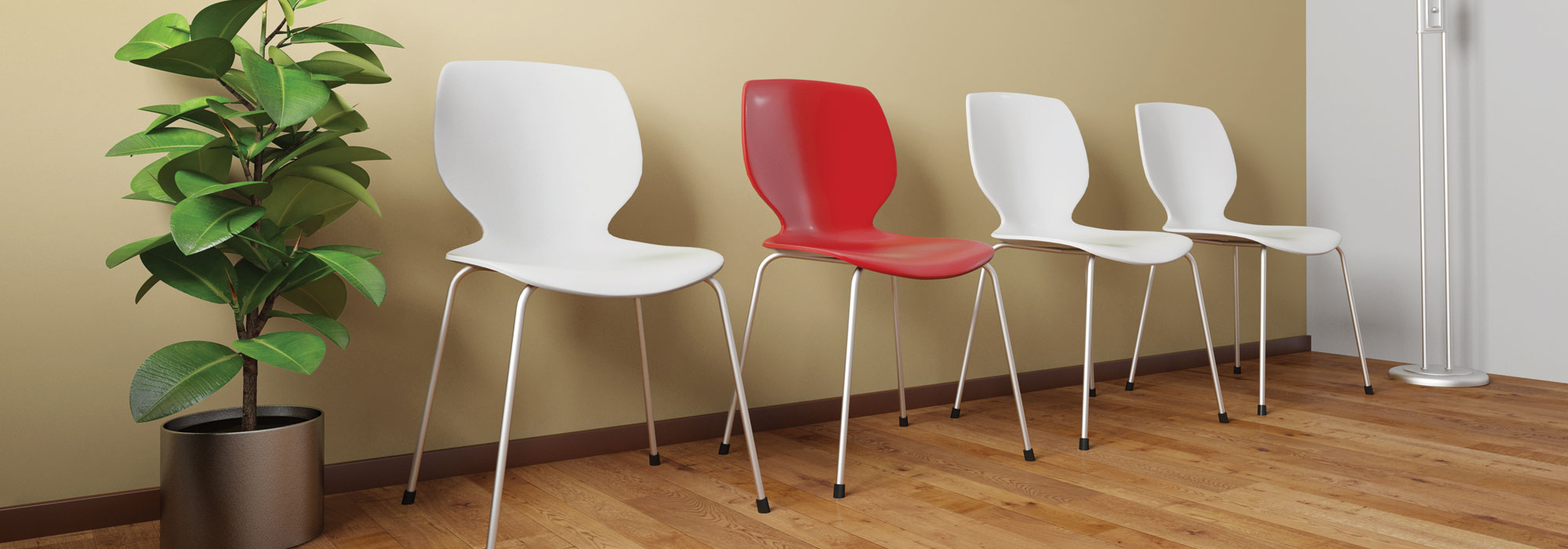
We care a lot about your experience on our website. Please tell us how we can improve.
If you want an immediate response, chat with us now
Times have changed significantly since the pandemic started and adaptability has become essential. As your workplace evolves to keep up with these changes, you may have noticed that the future of commercial design is shifting towards both functionality and making spaces feel more comfortable and welcoming.
The use of plants or greenery in both public spaces and in homes is not a new idea. Over the past few years, houseplants as décor has become more popular than ever. Likewise, biophilic design and architecture for all types of businesses has gained prominence due to the desire to bring nature to the workplace and within businesses. There's no prediction of that changing anytime soon.
In this article, you can look for answers to questions like:
Continue reading on, or start by shopping through our selection of biophilic options.
Biophilic design or biophilia incorporates greenery, whether real or fake, into your space and design theme. It may also involve approaching your design in a way that makes guests feel more connected to nature, such as maximizing exposure to natural lighting and using smaller elements like seashell gardens or aesthetic planters.
Plants and Greenery
Plants add an aesthetic and refreshing element anywhere in your building, from the lobby to individual rooms and spaces.
Natural Light and Water Features
Not only does natural light save electricity, it also adds to the ambiance of any space. Water features are a calming and nature-centric addition.
Environmental Patterns
and Features
Nature-inspired colors and patterns can be used for walls, floors, and decoration.
Adaptive Furniture Shapes
Stray from furniture shapes with hard lines. Lean into modern pieces that are made of natural materials and colors that works for your space.
If live plants aren't right for your space, you may want to consider nature-related accents like murals, fake plants, wallpaper, and artwork. Not only are plants and greenery beautiful to look at, it's been said that biophilia can help enhance healing and improve people's well-being. This is one of the reasons that biophilic hospital designs have become increasingly popular.

Choosing landscaping or biophilia, colors, and various textures in your décor can enhance your space, make your business or facility stand out, and make guests, customers, or patients feel more welcome.
In addition to looking appealing, biophilic design offers other advantages, such as:

The above benefits of biophilic design may have convinced you to change your business or workplace to incorporate naturalistic elements. If you're still wondering whether this trend is right for you, let the statistics talk.
improved state of well-being
more creativity
reduction of feelings of burnout/fatigue
increase in productivity
decrease in sick days/absenteeism
*Plantscapers, Inc.
Businesses and facilities that have already incorporated elements of biophilic design have started to see the benefits. Regardless of the industry you work in, having a presence of nature and plant life is appealing to guests, customers, and employees. Many people are willing to pay more for the experience or be more likely to visit locations that have incorporated touches of nature. Additionally, people are willing to pay a minimum of 30% more for locations that have a naturalistic view.
In short—the biophilic design trend is here to stay and it can benefit any industry or workspace.
When you hear the words "design trend," you may instantly think of interior design schemes for someone's home—and many people even think of trends as a temporary fad. However, you may not think of the ways these popular styles can incorporate trends into your business. The biophilic design trend, for example, is a creative idea to enhance the appearance and feel of your spaces, no matter the industry.
Hotels and Hospitality
Guests are more likely to be willing to pay $30 more for rooms with garden views or nature elements.
Hospitals and Healthcare
Plants and biophilic design inside or in view from a patients' room can reduce the average stay by 8.5%. Patients exposed to natural light and elements may also require 22% less medication.
Education and Schools
Children who are taught in environments with natural light may progress 20-26% faster.
All Industries
Biophilic design is a good investment—it may give you up to a 40% advantage to competitors and up to $2000 in savings, per employee, per year.
*Garden Center Magazine

Many businesses across industries such as healthcare, hospitality, foodservice, education, and even retail are already incorporating biophilic design into their landscaping and interior design. This could mean window boxes or a rooftop garden on your restaurant patio, lush plants in the entryway to your office cafeteria, or fake plants inside spaces like hospital rooms (if allergens and contamination are a safety concern).
When guests come to your establishment, whether it's for a meal, an extended stay, or even an operation, they're looking for a comfortable experience. The great thing about biophilic designs in any space is that a little change can go a long way. You may be amazed at the difference it makes to naturalize various areas in your facility.
Sources:
https://www.gardencentermag.com/article/research-green-instinct-biophilic-design
http://plantscapers.com/wp-content/uploads/2016/09/6-principles-of-biophilic-design-snapshot.jpg
https://www.planthropy.co/blog/infographic-biophilic-design-with-plants
https://www.verhaleninc.com/biophillic-design-in-the-office

Only Hubert delivers the expertise and products to solve complex challenges like overcoming the labor shortage, driving more food sales, and creating a memorable experience for customers.
For 75 years we've helped many industries—including hospitality, education, food retail, healthcare, retail, and more—overcome these unique challenges with our expertise and line of products, including displayware, display fixtures, décor, signage, bar & beverage, food prep equipment, large commercial equipment, ice machines, merchandisers, and back of the house equipment.
Want to learn more? Talk to an expert.